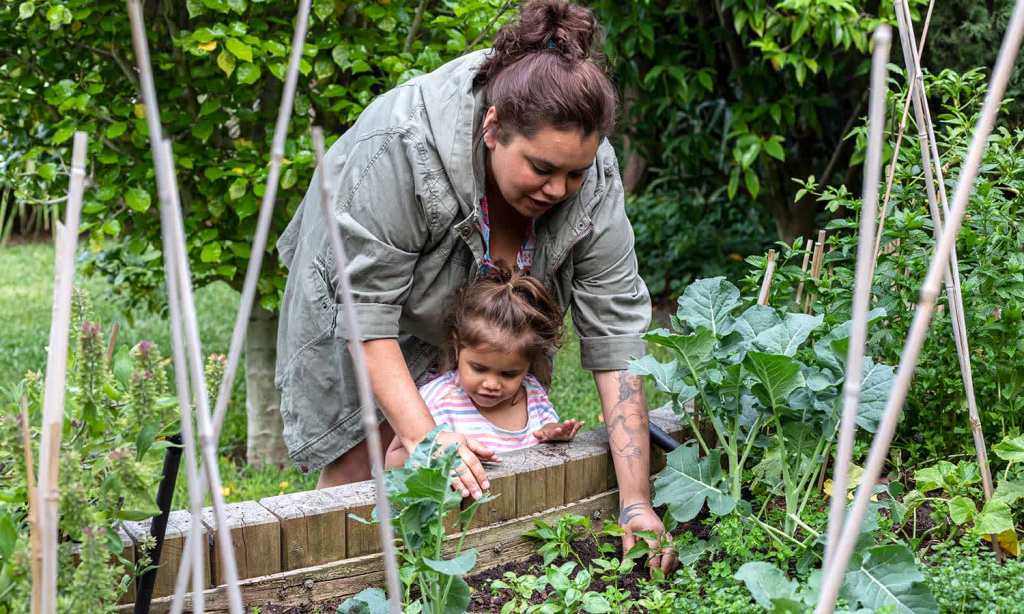There are many ways to set up a veggie garden when you have a good amount of space — but have you ever considered using the principles of permaculture?
The permaculture movement began in the 1970s by Australian founders, Bill Mollison and David Holmgren, who combined the terms of permanent agriculture and permanent culture into one. The foundation of the idea was to consider the essential needs of the natural ecosystem, the local climate and the people who depended on the specific plot of land.
The three basic principles of permaculture are: care for the earth, care for people, and conscious consumption (which means taking only what you need from the land and returning any surplus). Unlike traditional forms of gardening or farming, permaculture prioritises the intersections of needs between these three different groups.
So, how do you actually set up your veggie garden? We’ll walk you through the five important steps before you get your hands dirty.
Learn About Your Environment
The first step before going to the nursery is to sit and observe what you currently have at your disposal. Whether it’s a huge lawn space or a small balcony space, take the time to learn about the environment you’re going to use to grow your veggies. Here are some questions to consider during this process:
- How much direct sunlight do all the different parts of the land get during the different seasons?
- What kind of sun does the land get? How strong is it in the afternoon versus the morning?
- What is the topography like? Is it on a slope?
- Is there a tree or plant that grows wildly?
- What kind of animals — pests and pets — use the space?
Considering the answers to these questions will help you make informed and well-equipped decisions, based on what you have and can feasibly accommodate. This process might take between one week and a few months, depending on the seasons and climate of your local area.
Design Your Garden
Step away from InDesign and pick up your paper and pencil. Sketch out the rough shape of the lawn and make markings of how you would like to divide your garden. This is a particularly useful exercise to help you decide how much of each type of plant can grow in your garden.
This is also the perfect time to analyse the conditions you have and what kind of plants would grow well. For example, if you have an area that has partial shade under a big tree, you could consider growing herbs like sorrel, oregano and thyme. Whilst, areas with brighter and direct sunlight can be used to grow edibles like pumpkin, cucumbers and eggplants.
Feed Your Plants
Plants function optimally when all their basic needs are met: water, sun, fertilisers. Two of these factors are dependent on nature, however, you could also install water systems in the case of extreme weather conditions like droughts.
Consider building a small ditch where natural water is pooled and then redirected back to your garden beds, or otherwise, installing sprinklers that are on for a specific period of time during your day. Alternatively, if you think you will do the watering manually every day, consider collecting water from the rain from your roof to be stored in barrels or buckets and then using them when you have to.
The principles of permaculture promote the use of natural fertilisers through composting, so you can feed your plants with compost directly from your compost bin to enrich the soil to remove food wastage from your home.
Growing Ideas
Permaculture encourages the growth of native and mutually-beneficial plants between humans and the systems around them.
You could segment the type of plants to grow into three sections: perennials (plants that grow all year round), annuals (they grow seasonally) and natives (edible or non-edible plants that are naturally found in your climate).
Related: From Root to Fruit, Here’s How to Grow Vegetables From Food Scraps (Yes Really)
Related: Composting Isn’t as High Maintenance as You’d Think — Here’s How to Set One Up at Home
Visiting a local nursery is always helpful because the plants found there have already acclimatised to weather conditions in the country and will therefore have less of a shock when repotted into your plot of land.
Another thing to consider is companion planting, which is the practice of growing different plants together for mutual benefit. Some examples are tomatoes with basil, beans with beets and squash with dill. Check out the official Sustainable Gardening Australia page for more information on this.
Maintenance Is Key
At the end of the day, the work of a garden is neither one-off nor intense; it comes down to attentive, everyday conscious efforts of tending to your garden to make sure it’s thriving.
Check for the condition of the soil, and if it’s too dry, arid or has developed any fungus, consider sheet mulching rather than removing grass and tilling the soil. This keeps the microbes and rich nutrients in the soil and doesn’t stir up weeds from underground to germinate.
Check on the leaves, stems, and roots for signs of pests, insects or any kind of irregularity from one day to another. Just like our bodies, a garden has different parts of it that we should care for and fix over time.
Read more stories from The Latch and subscribe to our email newsletter.

